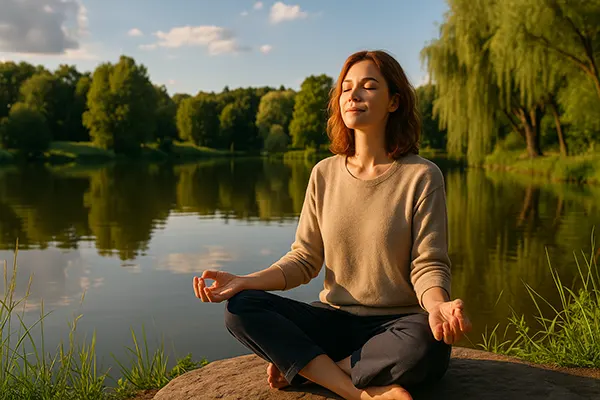
The Art of Slow Living: Practices to Restore Balance
In an age defined by constant notifications, rapid technological change, and the pressure to achieve more in less time, many people are turning to the concept of slow living. This philosophy encourages individuals to step back, reassess their priorities, and create space for moments of calm and presence. Far from being about inactivity, slow living is about intentional choices that foster mental clarity, emotional stability, and physical well-being. In 2025, as global stress levels continue to rise, the relevance of these practices has never been greater.
Why Slow Living Matters Today
Modern life has become increasingly fast-paced, with long working hours, social media pressures, and constant exposure to global news cycles. These factors contribute to anxiety, sleep disruption, and burnout. Slow living offers an antidote by shifting focus from endless productivity to meaningful engagement with everyday activities. By choosing to move at a more sustainable pace, individuals can reclaim control over their time and energy.
Health experts now highlight that balance is not a luxury but a necessity. The World Health Organization reports that stress-related illnesses are among the leading global health concerns in 2025. This underscores the importance of lifestyle approaches such as slow living, which combine mindfulness, connection with nature, and reduced reliance on technology. Such practices are increasingly being recommended as preventative measures for long-term well-being.
Moreover, slow living aligns with broader societal trends. Sustainability movements, environmental awareness, and the shift towards flexible work arrangements all intersect with the philosophy of slowing down. People are beginning to recognise that a life filled with constant urgency is neither fulfilling nor sustainable. Instead, focusing on present experiences allows for healthier relationships, deeper creativity, and improved overall life satisfaction.
Key Psychological Benefits
One of the most immediate outcomes of slow living is the reduction of stress. When individuals intentionally slow down their routines, they provide their minds with time to rest and recover. This shift in pace lowers cortisol levels, improving both physical and emotional health. Regularly engaging in calm and mindful activities helps prevent the long-term damage associated with chronic stress.
Another benefit is improved concentration. Constant multitasking fragments attention, while slowing down fosters deeper engagement with tasks. Whether reading a book without interruptions or preparing a meal without distractions, slow living helps rebuild focus and nurtures creativity. This enhanced concentration translates into higher-quality work and greater satisfaction in daily life.
Slow living also strengthens emotional resilience. By learning to appreciate small moments and letting go of unnecessary pressures, individuals cultivate patience and adaptability. These qualities are essential in managing uncertainty, making slow living not only a lifestyle choice but also a practical tool for navigating modern challenges.
Practical Ways to Embrace Slow Living
Adopting slow living does not require drastic changes; small, intentional adjustments often create the most impact. For example, starting the day with a mindful morning routine—such as journaling, gentle stretching, or quiet reflection—sets a calm tone. Avoiding the immediate reach for digital devices can help prevent information overload before the day has even begun.
Another practice is simplifying daily schedules. Many people overcommit to activities, leaving little space for rest. By learning to say no to unnecessary obligations and focusing on priorities, individuals gain time for meaningful experiences. This approach creates balance between personal needs and external responsibilities, reducing feelings of being constantly overwhelmed.
Connection with nature is also central to slow living. Spending even a short period outdoors, whether walking in a park or tending to a garden, has proven mental and physical health benefits. In 2025, urban planners are increasingly incorporating green spaces into cities precisely because of their positive influence on well-being. Regular interaction with natural environments supports relaxation and enhances mood stability.
Digital Mindfulness Practices
Technology has become an inseparable part of modern life, yet it is also a major source of distraction and stress. Digital mindfulness—a core element of slow living—emphasises setting boundaries with devices. This may include designating phone-free hours, disabling non-essential notifications, or engaging in device-free meals to encourage authentic conversations.
Digital detoxes are gaining popularity, with many professionals and families committing to weekly periods without screens. These breaks allow the nervous system to rest from constant stimulation, creating opportunities for genuine relaxation and deeper sleep. The practice also enhances awareness of how technology influences daily habits and emotions.
Finally, replacing passive scrolling with purposeful digital activities can transform the relationship with technology. Choosing educational podcasts, online courses, or creative digital projects supports growth while reducing the sense of wasted time. This shift ensures that technology remains a tool for enrichment rather than a source of distraction.

Integrating Slow Living into Daily Life
Slow living is most effective when it becomes part of everyday routines rather than an occasional retreat. Meal preparation is a practical example: cooking with care, selecting seasonal ingredients, and enjoying meals without haste transforms a basic necessity into a nourishing ritual. This practice strengthens family bonds and encourages healthier eating habits.
Work-life balance also benefits from slow living. Flexible work patterns, now common in 2025, allow employees to design schedules that prioritise both productivity and rest. Incorporating short breaks, practising deep breathing, and setting clear boundaries between professional and personal time all contribute to sustained energy and improved job satisfaction.
Equally important is fostering community connections. Taking time to engage with neighbours, participate in local activities, or support community initiatives enhances social well-being. Slow living reminds us that genuine relationships and shared experiences are vital components of a fulfilling life, balancing individual goals with collective harmony.
Long-Term Lifestyle Shifts
Adopting slow living is not a quick fix but a long-term commitment. It involves reassessing personal values and consistently aligning actions with them. For many, this means reducing consumerism, valuing quality over quantity, and choosing experiences over possessions. These choices gradually build a life centred on meaning rather than accumulation.
As people continue to embrace sustainability, slow living naturally integrates into environmentally conscious decisions. Cycling instead of driving, supporting local markets, and reducing waste are examples of lifestyle adjustments that not only benefit individuals but also contribute to global well-being. This alignment reinforces the sense of living with intention and responsibility.
Ultimately, the art of slow living is about creating a life where balance, presence, and authenticity are prioritised. While the modern world may encourage speed, those who adopt slower, intentional practices discover greater clarity, resilience, and fulfilment. This approach ensures that well-being remains at the heart of daily life, even in a fast-moving society.
